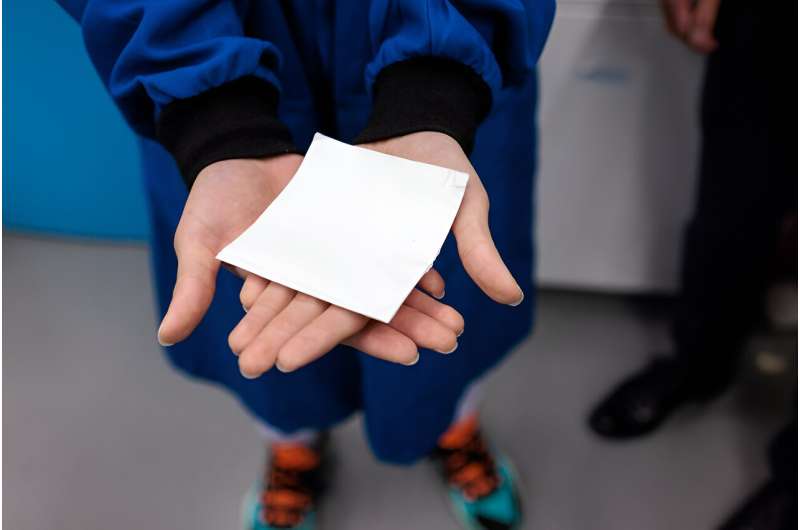
This year has already seen massive heat waves around the globe, with cities in Mexico, India, Pakistan and Oman hitting temperatures near or past 50 degrees Celsius (122 degrees Fahrenheit).
As global temperatures and urban populations rise, the world's cities have become "urban heat islands," with tight-packed conditions and thermal radiation emitting from pavement and skyscrapers trapping and magnifying these temperatures. With 68% of all people predicted to live in cities by 2050, this is a growing, deadly problem.
In a paper publishedin Science, researchers from the UChicago Pritzker School of Molecular Engineering (PME) detail a new wearable fabric that can help urban residents survive the worst impacts of massive heat caused by global climate change, with applications in clothing, building and car design, and food storage.
In tests under the Arizona sun, the material kept 2.3 degrees Celsius (4.1 degrees Fahrenheit) cooler than the broadband emitter fabric used for outdoor endurance sports and 8.9 degrees Celsius (16 degrees Fahrenheit) cooler than the commercialized silk commonly used for shirts, dresses and other summer clothing.
This, the team hopes, will help many avoid the heat-related hospitalizations and deaths seen in global population centers this year alone.
"We need to reduce carbon emission and make our cities carbon negative or carbon neutral," PME Asst. Prof. Po-Chun Hsu said. "But meanwhile, people are feeling the impact of these high temperatures."

'You have to consider the environment'
Existing cooling fabric for outdoor sports works by reflecting the sun's light in a diffuse pattern so it doesn't blind onlookers. But in an urban heat island, the sun is only one source of heat. While the sun bakes from above, thermal radiation emitted from buildings and pavement blast city-dwellers with blistering heat from the sides and below.
This means many materials that perform well in lab tests won't help city-dwellers in Arizona, Nevada, California, Southeast Asia and China when predicted massive heat waves hit them over the next few weeks.
"People normally focus on the performance or the material design of cooling textiles," said co-first author Ronghui Wu, a postdoctoral researcher at PME. "To make a textile that has the potential to apply to real life, you have to consider the environment."
More information: Ronghui Wu et al, Spectrally engineered textile for radiative cooling against urban heat islands, Science (2024). DOI: 10.1126/science.adl0653
Citation: New fabric makes urban heat islands more bearable (2024, June 13) retrieved 13 June 2024 from https://techxplore.com/news/2024-06-fabric-urban-islands-bearable.html
This document is subject to copyright. Apart from any fair dealing for the purpose of private study or research, no part may be reproduced without the written permission. The content is provided for information purposes only.
